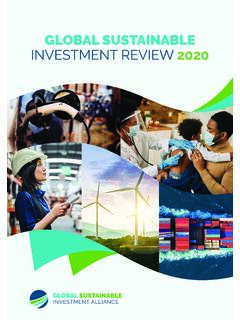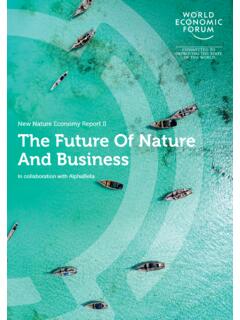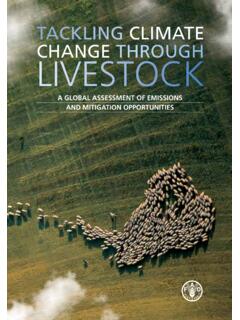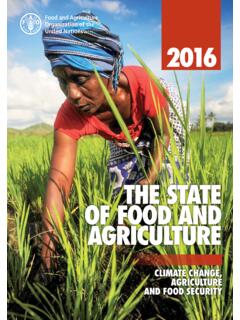Transcription of 2016 - GSIA
1 2016 2016 global sustainable investment Review1 Table of ContentsForeword ..2 Executive Summary ..3 Introduction ..5 sustainable Investing Defined ..6 global sustainable Investments 2014 2016 ..7 Growth of global SRI Assets ..7 sustainable investment Strategies ..8 global Market Characteristics ..9 Regional Market Characteristics ..11 Regional Highlights ..12 Europe .. 12 United States ..12 sustainable Investing in Latin America ..13 Canada ..14 Australia and New Zealand .. 15 Asia ex Japan ..16 Investing for Impact in Africa ..17 Japan ..18 Spotlight on Green Finance ..19 China ..19 United States.
2 19 Europe ..20 Canada ..21 Australia and New Zealand ..21 Conclusion ..23 Appendix 1 Methodology and Data ..24 Appendix 2 Glossary ..26 Appendix 3 Data Table ..27 Acknowledgements ..28 2016 global sustainable investment Review2 ForewordThe global sustainable investment Alliance (GSIA) is an international collaboration of membership-based sustainable investment organizations. Our mission is to deepen and expand the practice of sustainable investment through intentional international collaboration. We are pleased to present the global sustainable investment Review 2016, the third edition in the series since our inaugural review of sustainable investment worldwide in 2014, when we released our last biennial review, sustainable , responsible and impact investing has continued to grow, with investor concerns and actions on climate change providing one of the important drivers on this growth.
3 Accordingly, this edition features a special focus on green finance, with examples from China, the United States, Europe, Canada, and Australia and New Zealand. We are also pleased to be able to report on the activities of LatinSIF, launched in 2013, and the growth of sustainable and impact investing in Latin America. sustainable investing is also making inroads on the African continent, and we provide a snapshot of developments in the three major African economies: Kenya, Nigeria and South want to thank the many sponsors listed in the Acknowledgments page of the regional research reports used to prepare the global sustainable investment Review 2016.
4 We are grateful to US SIF: The Forum for sustainable and responsible investment , which led the production of the We also acknowledge the role that the Principles for responsible investment (PRI) played in gathering data for Asia ex Japan. We offer our gratitude to Bloomberg LP for the financial support it provided for the global review. Without the generous support of these sponsors, this report and the research on which it is based would not have been , Flavia Micilotta, Executive Director Eurosif, the European sustainable investment Forum Simon O Connor, CEO responsible investment Association AustralasiaLisa Woll, CEO US SIF: The Forum for sustainable and responsible investment and the US SIF Foundation Deb Abbey, CEO responsible investment Association Canada 1.
5 US SIF however relies on data provided by other regions and is not responsible for the content or accuracy of non US reports and data. 2016 global sustainable investment Review3 Executive SummaryIn early 2015, the global sustainable investment Alliance (GSIA) released the global sustainable investment Review 2014, which collated the results from the market studies of regional sustainable investment forums for Europe, the United States, Canada, Asia, Japan, and Australia and New Zealand. In the period since the last report was released, the global sustainable investment market has continued to grow, and in most of the regions covered by GSIA s member organizations, its share of professionally managed assets has also grown.
6 This report summarizes the status of sustainable and responsible investing in these markets at the start of , there are now $ trillion of assets being professionally managed under responsible investment strategies, an increase of 25 percent since 2014. In all the regions except Europe, which tightened its definition of sustainable investing, sustainable investing s market share has grown. In relative terms, responsible investment now stands at 26 percent of all professionally managed assets globally. Clearly, sustainable investing constitutes a major force across global financial 2014 to 2016, the fastest growing region has been Japan, due to greater reporting and sustainable investing activity by Japanese institutional asset owners, followed by Australia/New Zealand and Canada.
7 In terms of assets, the largest three regions were Europe, the United States and Canada, respectively. sustainable investing is an investment approach that considers environmental, social and governance (ESG) factors in portfolio selection and management. For the purpose of this global report and for articulating our shared work in the broadest way, GSIA uses an inclusive definition of sustainable investing, without drawing distinctions between this and related terms such as responsible investing and socially responsible investing. These are collectively referred to as sustainable investing or investment encompasses the following activities and strategies:1.
8 Negative/exclusionary screening,2. Positive/best-in-class screening,3. Norms-based screening,4. Integration of ESG factors,5. Sustainability themed investing,6. Impact/community investing, and7. Corporate engagement and shareholder largest sustainable investment strategy globally is negative/exclusionary screening ($ trillion), followed by ESG integration ($ trillion) and corporate engagement/shareholder action ($ trillion). Negative screening is the largest strategy in Europe, while ESG integration now dominates in the United States, Canada, Australia/New Zealand and Asia ex Japan in asset-weighted terms.
9 Corporate engagement and shareholder action is the dominant strategy in investing is a small but vibrant segment of the broader sustainable and responsible investing universe in all the markets studied. GSIA defines impact investing as targeted investments, typically made in private markets, aimed at solving social or environmental problems. Community investing, whereby capital is specifically directed to traditionally underserved individuals or communities, is included in this category, as is finance that is provided to businesses with an explicit social or environmental Europe, total assets committed to sustainable and responsible investment strategies grew by 12 percent from 2014 to 2016 to reach $ trillion.
10 Fifty-three percent of total professionally managed assets in Europe now use responsible investment strategies. Exclusionary screens remain the dominant strategy at 2016 global sustainable investment Review4$ trillion, a growth rate of 48 percent over the past two years. Norms-based screening is the second biggest SRI approach with over $ trillion in assets, a growth rate of 40 percent from 2014. Engagement and voting follows quite closely in terms of popularity, with over $ trillion in assets and 30 percent growth. Using a narrower definition of ESG integration in 2016 and recalculating the 2014 ESG integration total, Eurosif found that this strategy grew 39 percent over the two-year period to reach $ trillion.









